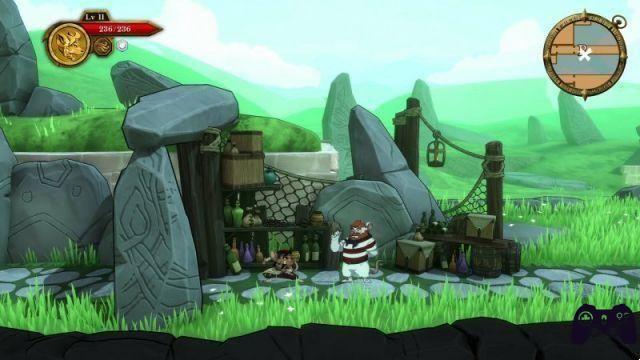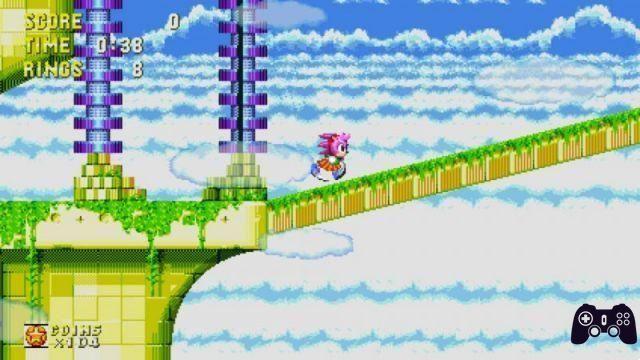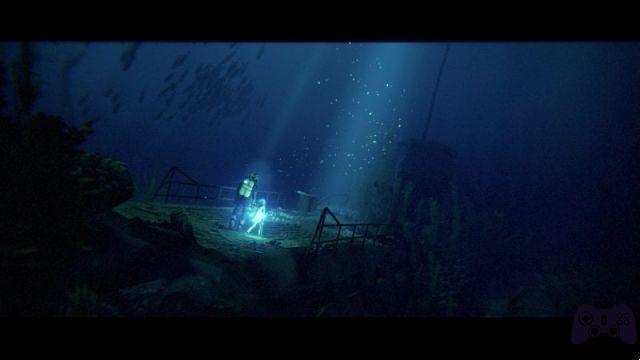Although Persona 5 is the most famous title in the series, the one that has conquered Persona all over the world even more than the fourth episode, in our area the Spanish localization of Persona 5 Royal, recently also available on Nintendo Switch, without a doubt has contributed. - the third chapter is undoubtedly the most important, since it was a turning point: it was then, in fact, that Atlus introduced the life component into its games, a feature that ended up distinguishing them from practically all other role-playing games Japanese history. the market and which inspired countless subsequent productions.
Despite this, Persona 3, which was released in 2006 for the PlayStation 2, was only revived once on the PSP a few years later, and that was it. It is precisely that version that Atlus has decided to bring to contemporary platforms, localizing it in our language for the occasion, but in this Persona 3 laptop review We will explain why we would have expected something more.
The first Person of the new course.
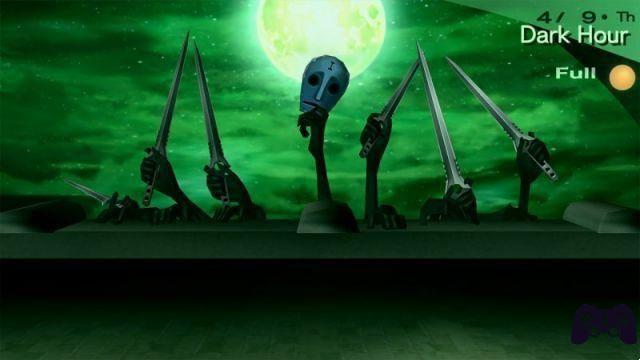
Persona 3 established the backbone of the series. as everyone knows it nowadays, crossing dungeon exploration and turn-based combat with the life component, in which the player faces everyday life: lessons at school, part-time jobs, socializing with friends , known and complete strangers. Therefore, Persona 3 has invented what Persona 5 players would call Confidants, but which until Persona 4 were called Social Links, that is, relationships with secondary characters that are built over time, frequenting them in moments of freedom, and that They confer bonuses and advantages. Details about the game.
In the middle are precisely the challenging fights, which are heavily inspired by the lore of Shin Megami Tensei, the main series that inspired Persona: turn-based, in which the player controls a maximum of four characters and has to choose the correct spells and attacks to hit the weak points of the characters. enemies and eliminate them as quickly as possible.
When playing Persona 3, a new fan will find more or less all the features they may have appreciated in the fifth version, including the Spanish Language, which for us is the great news of this particular conversion. Also there fiction acted as a true pioneer, establishing some cornerstones that would later return in later episodes, starting with the Shadows, mysterious creatures that emerge in our world during the Dark Hour, a period of time that passes between the end of the day and the beginning of the following. While the vast majority of people enter a kind of stagnation, some individuals manage to perceive the Dark Hour and fight against the Shadows with the help of the Personae: gathered in a dormitory that almost looks like a headquarters, these students of the Gekkoukan Institute they welcome each other. Among their ranks is the player who, for some mysterious reason, can manifest multiple Personae.
In the portable version of Persona 3, the player can choose whether to play a male protagonist, as in the original edition for PlayStation 2, or a female: the choice is not only aesthetic, as it changes some aspects of the narrative and gameplay . . There female lead demonstrates a more ironic and free-spirited character in multiple-choice conversations and can bond with different supporting actors than her male counterpart. In short, it is a kind of additional campaign that is worth playing, perhaps in New Game+ mode to discover all the differences between both stories.

La horror-tinged narrative Persona 3 is much closer to Shin Megami Tensei than the later Personas in its atmospheres and themes, but it also inaugurates the course that the first two Personas - very rarely mentioned, but equally important - had at least hinted at: the game explores in almost the psychologies of its characters are manic, since during the adventure they face their personal demons, growing above all as individuals. But beyond the Gekkoukan students, almost all of the secondary characters have something to tell that encourages the player to spend time with them, in the midst of heartbreaking, mysterious or simply fun events.
Persona 3 remains a well-written title to this day, with a carousel of memorable characters which is no coincidence that we find it in a multitude of later games, from the fighting game Persona 4 Arena Ultimax to the rhythm game Persona 3: Dancing in Moonlight, passing through the two Persona Q for Nintendo 3DS.
Gameplay between past and present.

If the story of Persona 3 continues to fascinate us even after years, our problem with this conversion lies precisely in that portable suffix, which represents a controversial choice in several aspects. As it stands, this edition is certainly very faithful to the iteration proposed on PSP more than ten years ago: Atlus simply added some convenient features, such as quick save and tweaking the resolution of 3D models, and in doing so inevitably compromised the final visual representation, a victim of that gap between the polygonal models and the duller 2D backgrounds to which all the remasters of recent years have accustomed us, starting with those of Square's Final Fantasy Enix. After that, if we exclude the aforementioned addition of the Spanish language, the content remained identicaland therefore, those who have already played Persona 3 on PSP can safely skip this version.
However, apart from the various additional content - such as the female protagonist's campaign, the extra difficulty levels and a whole series of balances and quality of life improvements - which in a sense make this version the best in terms of gameplay, Persona 3 stay portable a kind of truncated version compared to the original for PlayStation 2, because it not only lacks the beautiful cartoon cinematics, which could also have been implemented in this version, but also the entire exploratory part outside of the dungeons, replaced by practically point-and-shoot screens click. who make so many visual novels.
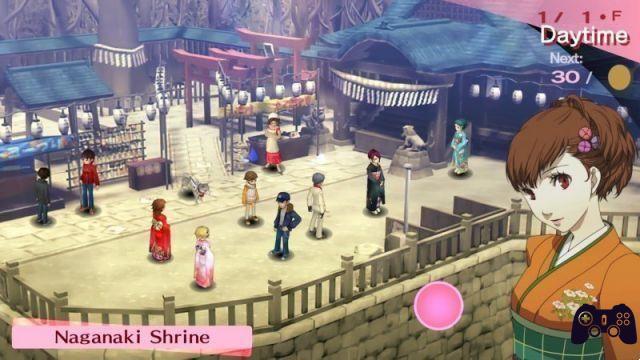
This solution certainly hinders the player's sense of immersion, even if the exploration in the original was not as structured as in later titles and was ultimately monotonous. However, there remains the possibility of exploring it in the third person. Tartar, the procedural labyrinth that manifests itself in the Gekkoukan during the Dark Hour, and which the player must climb throughout the school year to reach the end of the adventure. Here Persona 3 Portable, although improved in playability compared to the first edition of 2006 with the introduction of new mechanics and balances, shows the side and all the limits of an old role-playing game. He combat system It's functional, but also duller than later titles, and Tartarus, with its tangle of random corridors, isn't exactly the most fun to navigate.
Persona 3 maintains that though. strategic component that fans of the Atlus series should love: we can conquer new Personae and then merge them in the Velvet Room in the presence of the usual Igor, unlocking entities that are increasingly stronger or in any case more suitable for our purposes. Velvet Room's features are clearly more limited than later versions of the series, but still allow for a variety of strategies.

Persona 3 Portable is still a Exemplary role-playing game, but the third time we played it, even though many years have passed, we have to admit that it has aged poorly compared to, for example, the always excellent and fresh Persona 4 Golden. However, we are facing a re-release, not a remake, but it is regrettable that Atlus has not taken the opportunity to propose a more complete title, adding, for example, the contents of Persona 3 FES.
For the uninitiated, Person 3 FES It was a kind of DLC - an additional disc for PlayStation 2, actually - that in the rest of the world was offered in a kind of single package that included the original campaign, dubbed The Journey, and the extra content: a real extra . campaign, The Answer, which continued the story after the heartbreaking ending of Persona 3, bringing many characters full circle. The Answer's gameplay was certainly criticizable in several aspects, but the narrative deserved attention; However, over time Atlus seems to have confirmed the canonicidad of Persona 3 Portable, ignoring what was said in The Answer, and the choice to propose this version again in 2023 would seem to confirm the decision made at that time.
Conclusions
Tested version Nintendo Switch digital delivery Nintendo eShop Price 19,99 € Holygamerz.com 7.5 Readers (9) 8.2 your votePersona 3 Portable is a simple remastered version of the title of the same name released for PSP many years ago and as such feels all the weight of its years: if the narrative is masterfully maintained, in the playable aspect it could be difficult to adapt. to its limits, especially if you come directly from Persona 5 Royal. It remains a fundamental title to understand the evolution of the Atlus series, and it is a shame that the Japanese company has not put a little more effort into it from a technical and content point of view, perhaps implementing cartoon cinematics or the Persona 3 FES Additional Campaign. In short, we continue dreaming of that remake that combines the best of both worlds in a definitive Persona 3.
PRO
- The story is always exciting and full of memorable characters.
- Improved resolution and some modern and practical features
- It remains a must-have title for lovers of Japanese role-playing games.
AGAINST
- This is the PSP version of Persona 3 with its strengths and weaknesses.
- The gap between 3D models and scenarios is an eyesore
- Too bad Persona 3 FES content wasn't added




